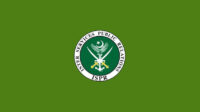ISLAMABAD, Dec 19 (APP): To reduce the increasing number of accidents on national highways & motorways, the government of Pakistan, upon recommendations of National Highways & Motorways Police (NHMP), has revised fine rates prescribed for violations on highways and motorways.
According to the official sources of NHMP, the revised Schedule XII of National Highway Safety Ordinance (NHSO) 2000 shall take effect from 1st January, 2020.
This schedule enlists minor penalties for traffic violations on the national road network only and is not applicable to provincial highways or roads within municipal limits of cities and towns.
The rates for existing violations have been revised for better regulation.
The rates for different violations have been determined in light of greater risk to road users.
Similarly, type of vehicle has been given due consideration prescribing heavy penalties for Public Service Vehicles entrusted with safe transportation of several passengers.
A quick glance at the cross-country comparison for fine rates indicates that Pakistan is amongst the few countries where, despite revision after nineteen years, fines for traffic violations are the least, the official source said.
In case of over speeding, the amount of fine in Pakistan is Rs 2500/- whereas it is £1000 (Rs. 202,747) in England, AED 300-3000 (Rs 12,653 to 126,527) in UAE, Saudi Riyal 300-2000 (Rs. 12,391 to 82,604) in Kingdom of Saudi Arabia.
Similarly, the fine rate for driving without a licence in Pakistan is Rs 5000/- whereas it is £1000 (Rs. 202,747) in England, AED 400-500 (Rs. 16,870 to 21,088) in UAE, Saudi Riyal 150-300 (Rs. 6,195 to 12,391) in Kingdom of Saudi Arabia.
The earlier fine rates were framed in 2000, at the time of promulgation of National Highwys Safety Ordinance.
The objective of this revision is to promote a culture of responsible driving and maximize safety of commuters on national road network.
It is worth a mention that according to the World Health Organization (WHO) estimates in 2016, more than 27,500 people were killed, and an estimated 500,000 people were treated in hospitals and health units because of road accidents in Pakistan.
This is almost three times greater than the number of combined deaths in terrorism (956) and homicide (8516) for the corresponding year.
Road traffic crashes are the number one cause of death among those aged 15-29 years.
The economic cost of road traffic crashes in middle-income countries is estimated to be as high as 5% of gross domestic product (GDP).
Pakistan’s GDP is projected to increase to $360 billion in 2020 (Ministry of Finance 2017; World Bank, 2017). If this projection is correct, based on a conservative cost of 3% of GDP, road traffic crashes could cost the Pakistan economy about $ 11 billion in 2020.






